In vintage days, here is a getaway (with wine, of course) to Wheel which is valid not only for this month where the terroir is the protagonist, but for the whole year. Because in the paradise of Verdejo, historic towns such as Tordesillas, Olmedo or Medina del Campo also await; wineries where architecture is a jewel in itself; and gastronomic sins such as suckling lamb.
Precisely from the search for this synergy between wine tourism, heritage, history and gastronomy The Rueda Wine Route was born in the area in 2013, with 22 affiliated municipalities and about 150 partners, among which there are wineries that can be visited, bars, restaurants, accommodation and fifteen unique shops that make the area who it is. Knowing them all will be complicated in a single visit, but as an introduction, here is a route to drink, eat, see, sleep and, of course, enjoy.
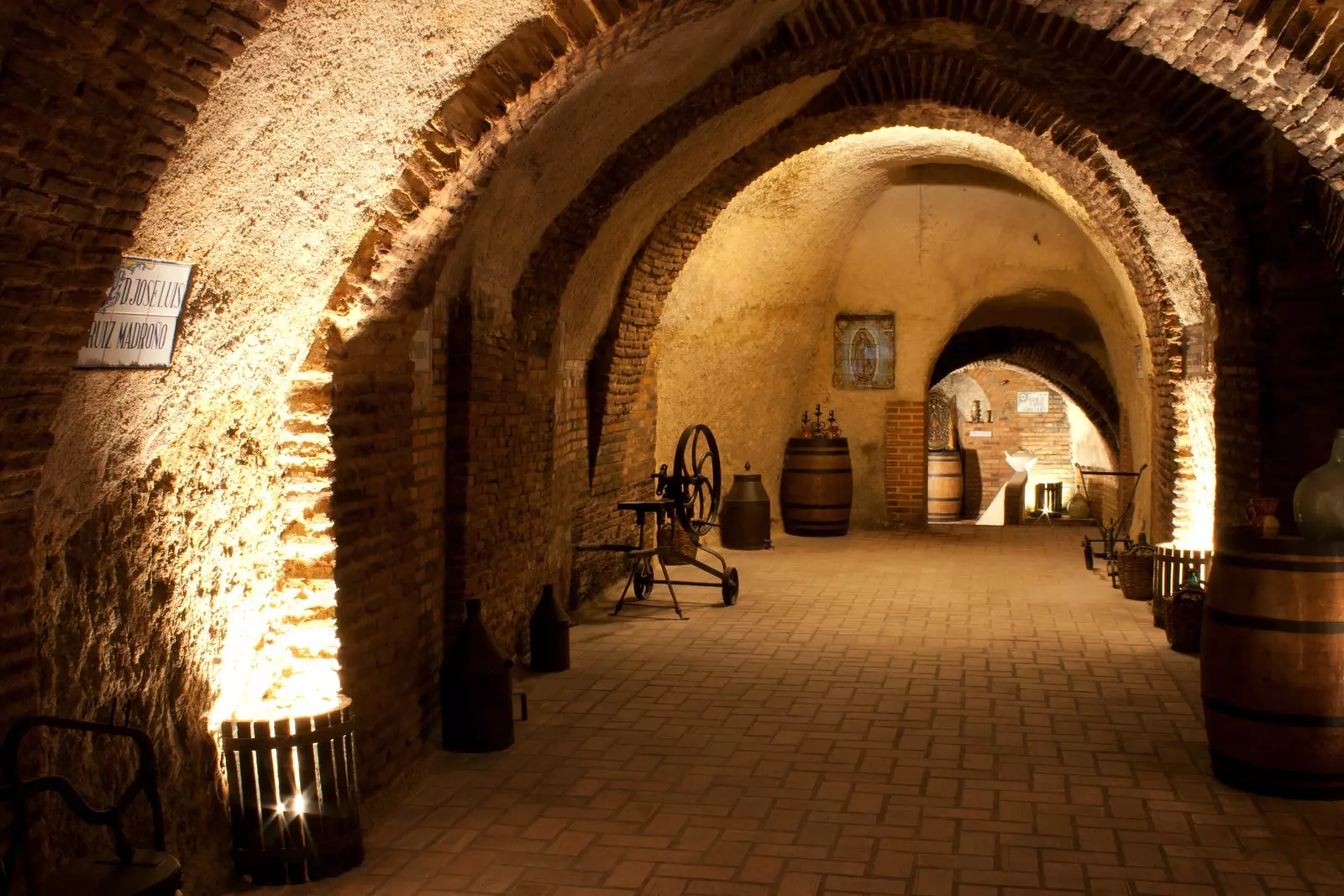
Mocén underground cellars.
IN THE BOWELS OF THE EARTH
It is clear that, since more than a thousand years have been producing wine on this edge of the Duero River, one cannot come here without stopping to discover the savoir faire of their winemakers. Names such as Cuatro Rayas, Yllera, José Pariente, Protos or Viore and Marqués de Riscal from La Rioja are just some of those close to 70 names that make up the D.O of the most consumed white wine in the country and that can be visited within the Rueda Wine Route. Now, nothing like diving underground to discover the Mudejar essence of the area.
Between the underground cellars that are best preserved –and that can be visited– are those of Mocen, in the town of Rueda itself, with its four kilometers excavated at a depth of 25 metres. Magnificent example of the Mudejar heritage of the area, the winery also has an imposing museum whose library has nearly 20,000 volumes on gastronomy, wine and history of the area and a art gallery with works by different artists and pictorial movements.
Although underground they also taste good in the historic cellar Albert's , in the neighboring Serrada. Already the Dominicans in the eighteenth century fermented wine in wine presses that today are still in operation under the command of the fourth generation of the Gutiérrez family in a labyrinth worthy of getting lost. In addition, as a curiosity this winery It has a real 'demijohn beach' where the first phase of its award-winning pale and golden wines takes place, bringing a little corner of Jerez to the heart of Rueda and offering a most memorable photo.
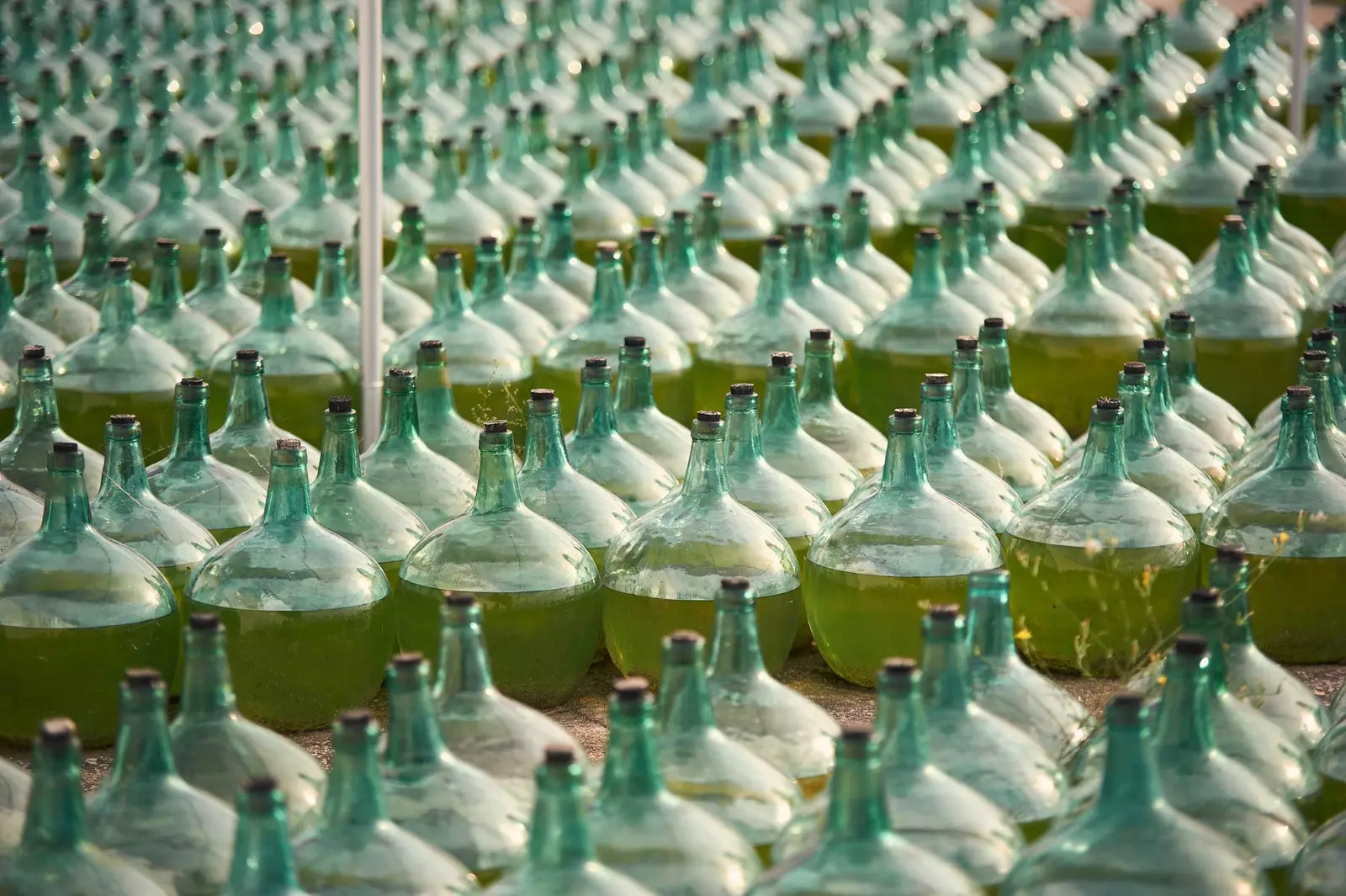
Demijohn beach.
Returning to the open sky, it is better to fill your stomach before continuing with the wine tasting, especially those who prefer to avoid the spittoons. A stop that locals and visitors make is lola house, whose tortilla skewer and sausage dishes never fail. Epicenter of winemakers from the D.O., especially at coffee time, this gastrobar a priori roadside also has one of the best stores gourmet region of.
If you find it difficult to choose among the 1,500 wines on display, do not hesitate to ask about Bruno, the manager and heir to Casa Lola, who after studying topography returned to the family fold to devote himself entirely to wine. For sale and production, then he is making his first steps in wine with a jewel called rooster button what he promises.
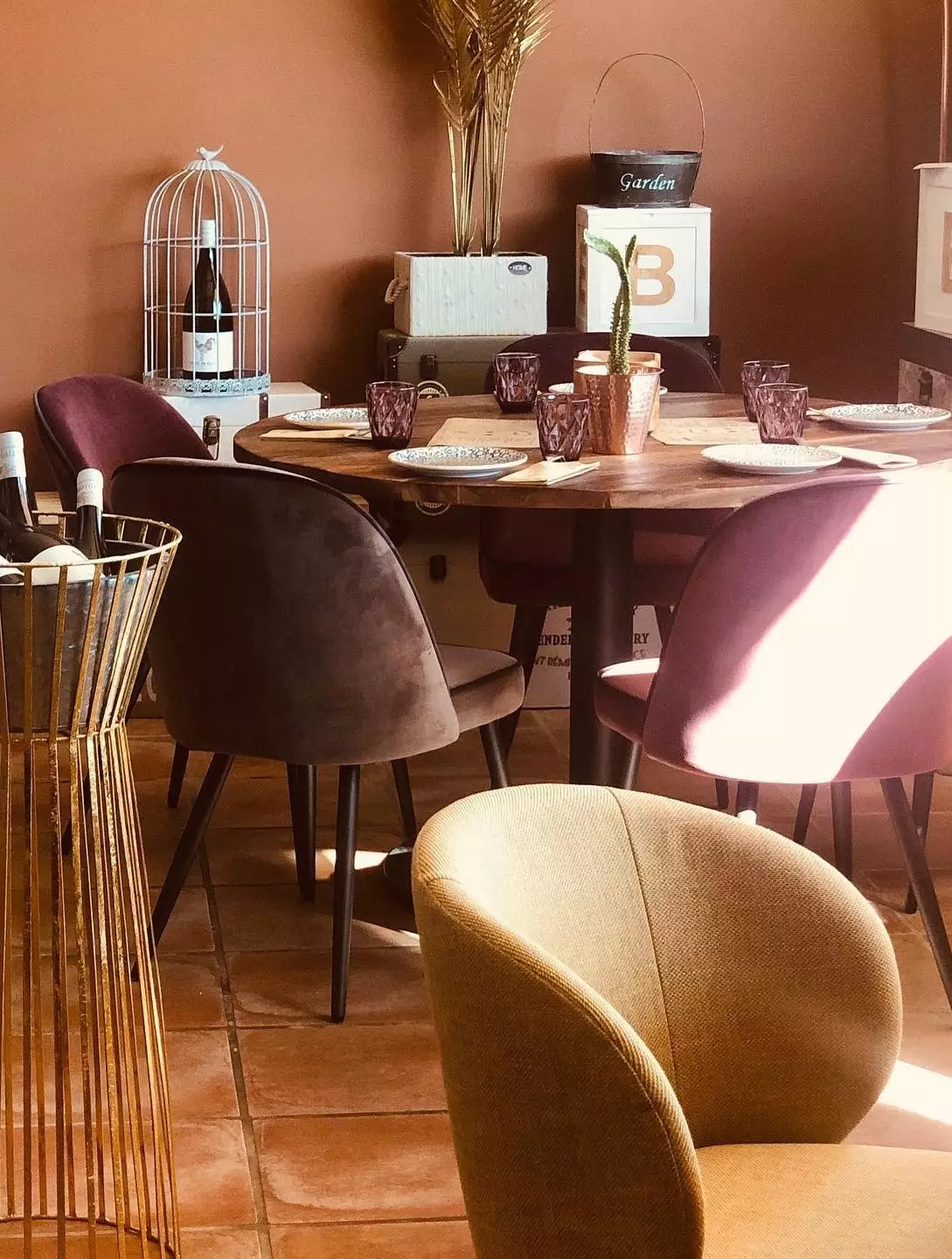
Room in Casa Lola.
A CHURCH WITHOUT MASS
People say that The Golden Mile of Rueda is formed by the triangle Rueda-Serrada-La Seca. Well, in this last town -which the Comuneros already set foot on 500 years ago- awaits the possibility of discovering organic wines and recovered varieties that Javier Sanz has been putting it into practice for years none other than within the walls of a 16th century church.
And it is that this winegrower did not hesitate for a second to buy the place where he had made the communion when it went up for auction. Yes indeed, what remained of the church of the Third Order were ruins, which today looks rebuilt to enjoy among a religious echo of jewels such as its Verdejo from old Finca Saltamontes vines, the new name of its 1863 label, as well as the limited creations of extinct varieties such as malcorta or colorado.
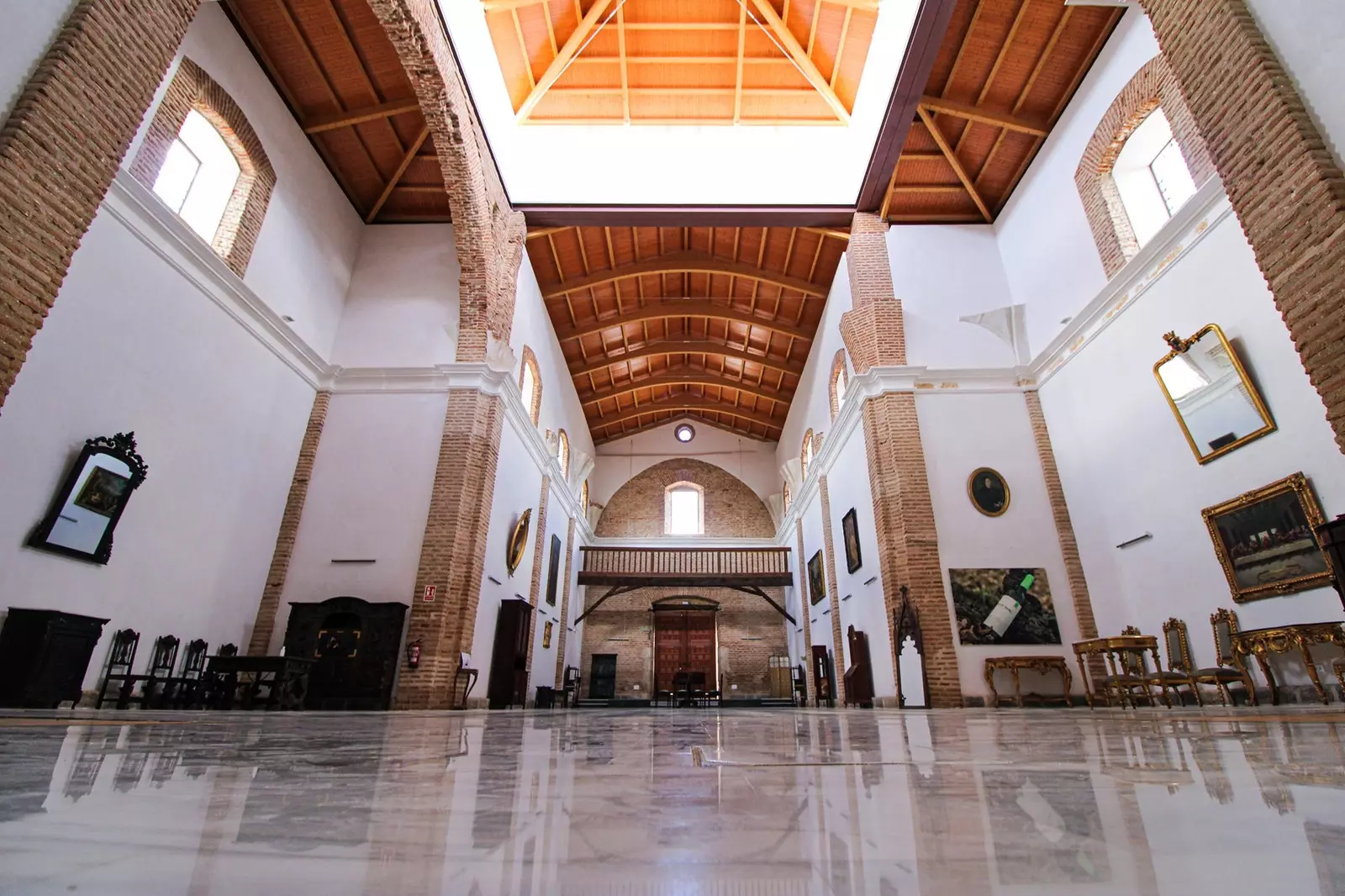
The church of the Third Order today looks rebuilt.
NO WINE WITHOUT CHEESE
There is no better combination in the world than a glass of wine accompanied by a good cheese and real bread. And of the three things they know in the Castilian plateau. Suffice it to say that the Bread Museum awaits in Mayorga and that there is Protected Geographical Indication Castilian Cheese to make it clear that to bread, bread, and to wine, wine.
Discovering this 100% sheep's milk product within the Rueda route is possible. You just have to approach the Campoveja (Serrada) and El Gran Cardenal (in Medina del Campo) cheese factories to enjoy your creations. Without belonging to the IGP but with its own expertise it also deserves a stop the Cantagrullas farm, isolated from the madding crowd between Medina del Campo and Olmedo, next to a town of only eight inhabitants, dedicated to the elaboration and refining of Spanish artisanal cheeses that in Madrid can be tasted in the well-known Farming Cheese.
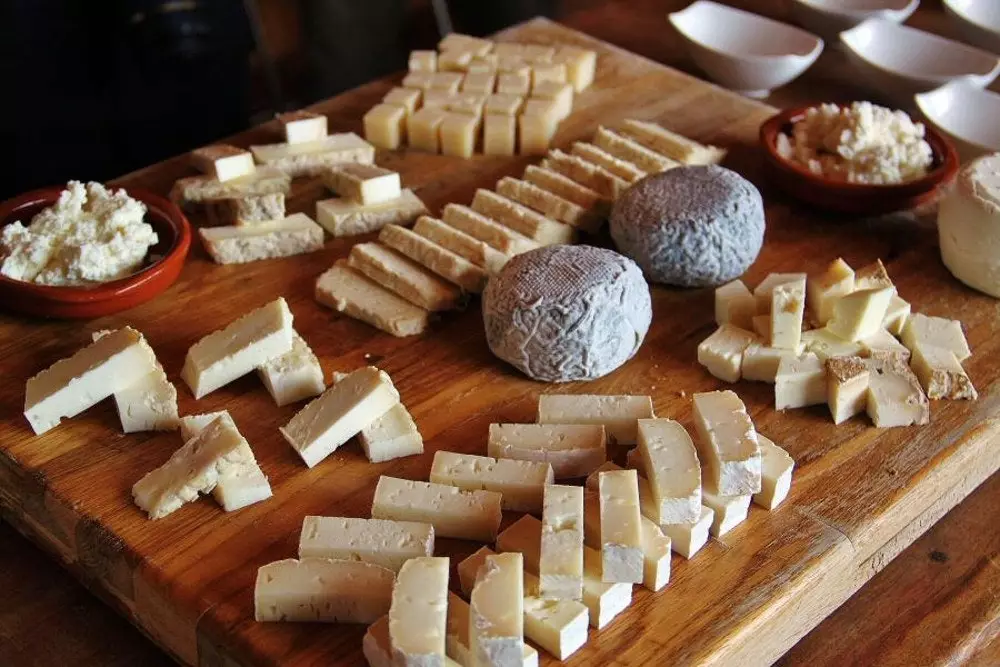
Castilian cheese.
STAR FOOD
I'm sure the cheese has whetted your appetite. Well, just ten minutes from Serrada by car, wait one of the inescapable gastro stops: The Botica. Is in Matapozuelos where is the only Michelin Star in the area.
Located in the old village pharmacy It is the kitchen of Miguel Ángel de la Cruz, without a doubt one of the culinary references of Castilla y León. Here he awaits a subtle, contemporary and very personal cuisine that is nourished by ingredients from the environment that he collects himself: roots, herbs, berries and wild plants, with special attention to pineapples and pine nuts from this land of wine and pine forests. It has a menu and a tasting menu: A walk through the surroundings (for €65 without wine), where you can enjoy creations such as lacquered veal gizzard with a creamy pine nut and green pineapple cream under a veil of milk and herbs; Duck from Villamartin, salty toffee of onions from the field and summer truffles o Red beetroot and strawberries with mints, lemon verbena cider and beetroot juice.
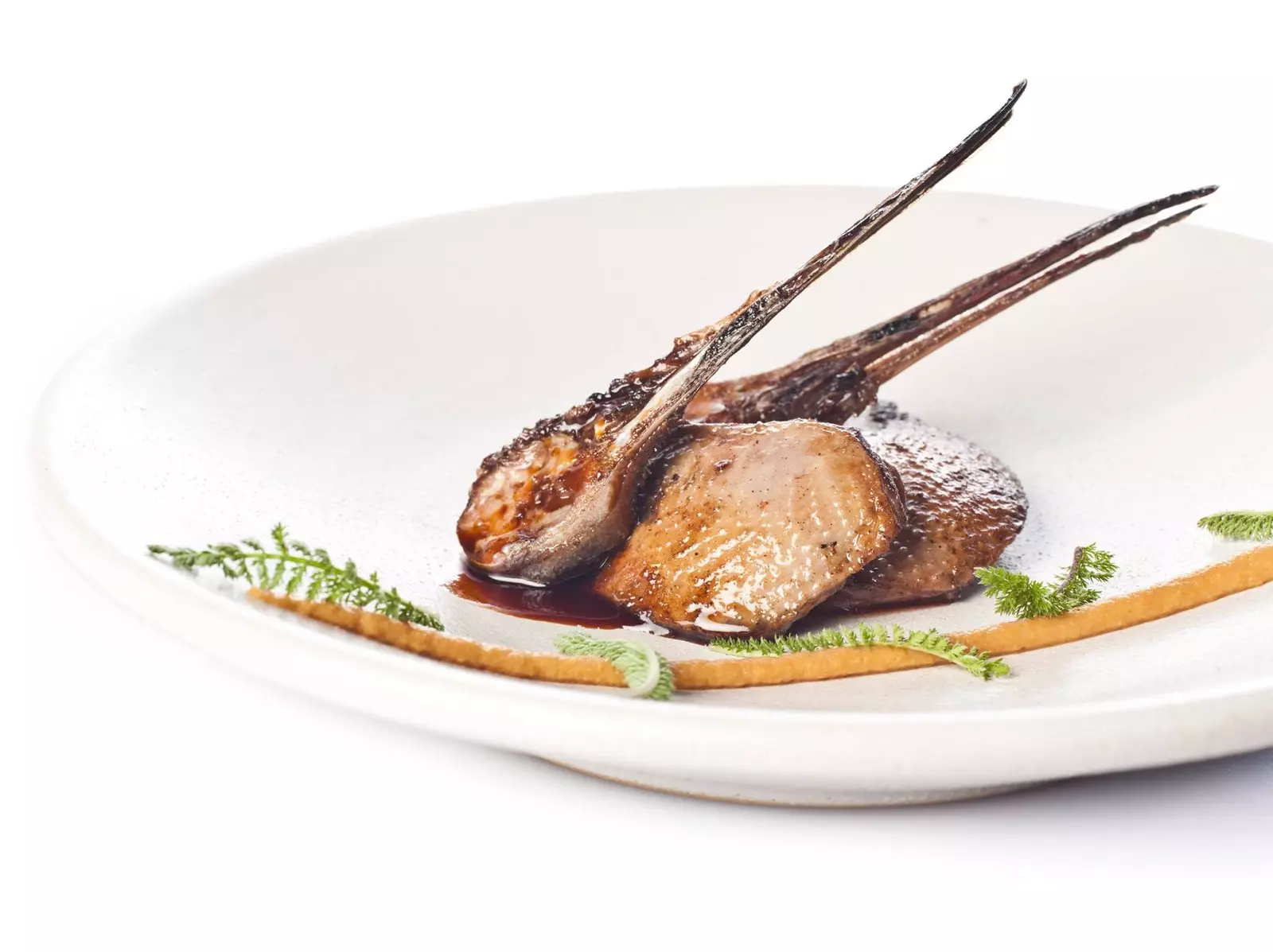
Hunting dish.
IN THE WINERY OF RAFAEL MONEO
In the direction of Madrid, the town of Olmedo awaits, but before entering here, architecture lovers should know that the National Architecture Award and the only award Pritzker Spanish, Rafael Moneo was born in Tudela but has part of his heart set here. Specifically in a farm that he himself restored and whose wines are owned by the family.
It is The Improved one of those jewels that, either because of the history that it oozes, the architectural quality that it has or the peculiarity of making red wine in Rueda, is worth stopping by. The origin of the estate lies in a Hieronymite monastery erected in the 15th century whose patronage signed the Infante Fernando de Antequera, better known later by history as Ferdinand I of Aragon. In fact, converted into a hostel it would become a place where nobles and kings would often stop, as well as great moments such as Christopher Columbus drafting the 1497 Memorial there or that Alonso Berruguete designed the altarpiece for his Mudejar chapel, today standing and classified as a National Monument. Centuries to come would grow the monastery, dismantle it, sell it into private hands, become a college, and eventually come into the hands of Moneo in the 2000s.
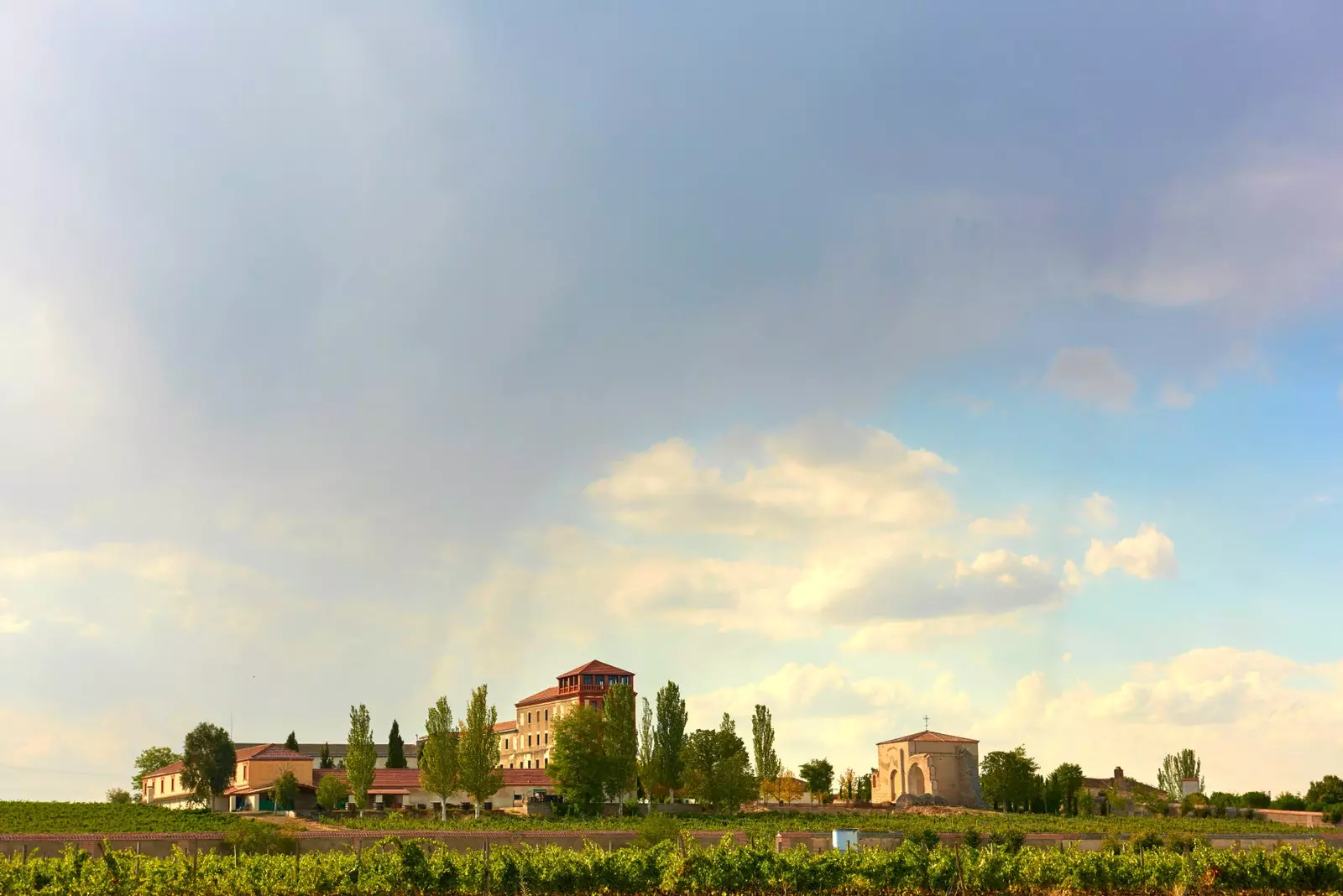
Bodegas and vineyards La Mejorada (Valladolid).
LAMB AND SPA: THE PERFECT STOP
Speaking of heritage, Olmedo is another of the towns in question where a stop is always right. Also, if you don't have much time to visit the whole area, The Mudéjar Theme Park in Castilla y León could be the perfect patch, Well, this 15,000 m2 space located in Olmedo houses 21 architectural replicas on a scale of heritage icons such as the neighboring castles of La Mota or Coca. Furthermore, although Lope de Vega did not live here, his work did, immortalizing that gentleman from Olmedo for eternity and leaving in the Palace of the Knight of Olmedo the perfect visit to get closer to the theater of the Golden Age and the writer's work.
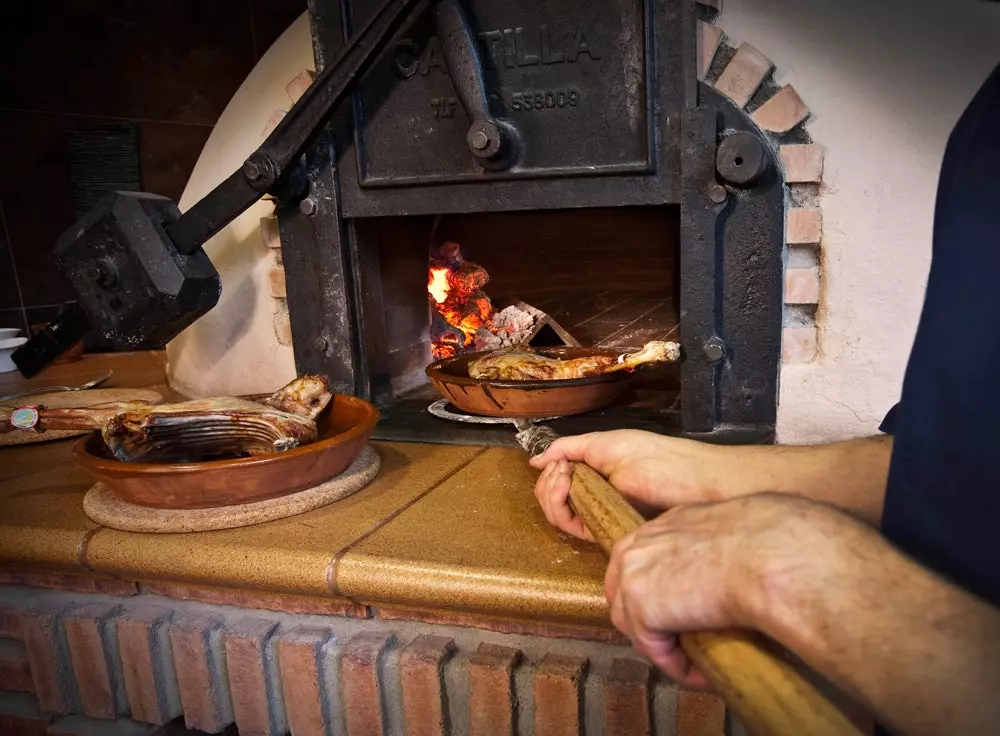
Traditional lamb.
What's more, another great culinary classic awaits here: El Caballero de Olmedo. Is he suckling lamb one of the great Castilian culinary jewels and in this Theatrically titled restaurant housed in a former Franciscan convent They have been achieving the perfect roast for more than two decades. It remains to say that it is better to go hungry, because they cannot miss their delicious suckling lamb croquettes or blood sausage that will take your breath away. Crossing the street, the Olmedo Spa It is presented as a perfect cardinal point to spend the rest of the day (and digest). lifted over the ruins of the old convent of Sancti Spiritus from the 12th century, this complex with a four-star hotel of the Castilla Termal group invites you to forget everything between your mineral-medicinal waters and its treatments with wine among remains of Mudejar art.
Since we are talking about food, other names that never fail are, for example, El Cossío in Mojados –perfect for churro suckling lamb–; the Mesón de Pedro, in Matapozuelos, for some traditional garlic soups; or El Sarmiento, in Serrada, to discover the flavor of meat and fish grilled on the sarmiento.
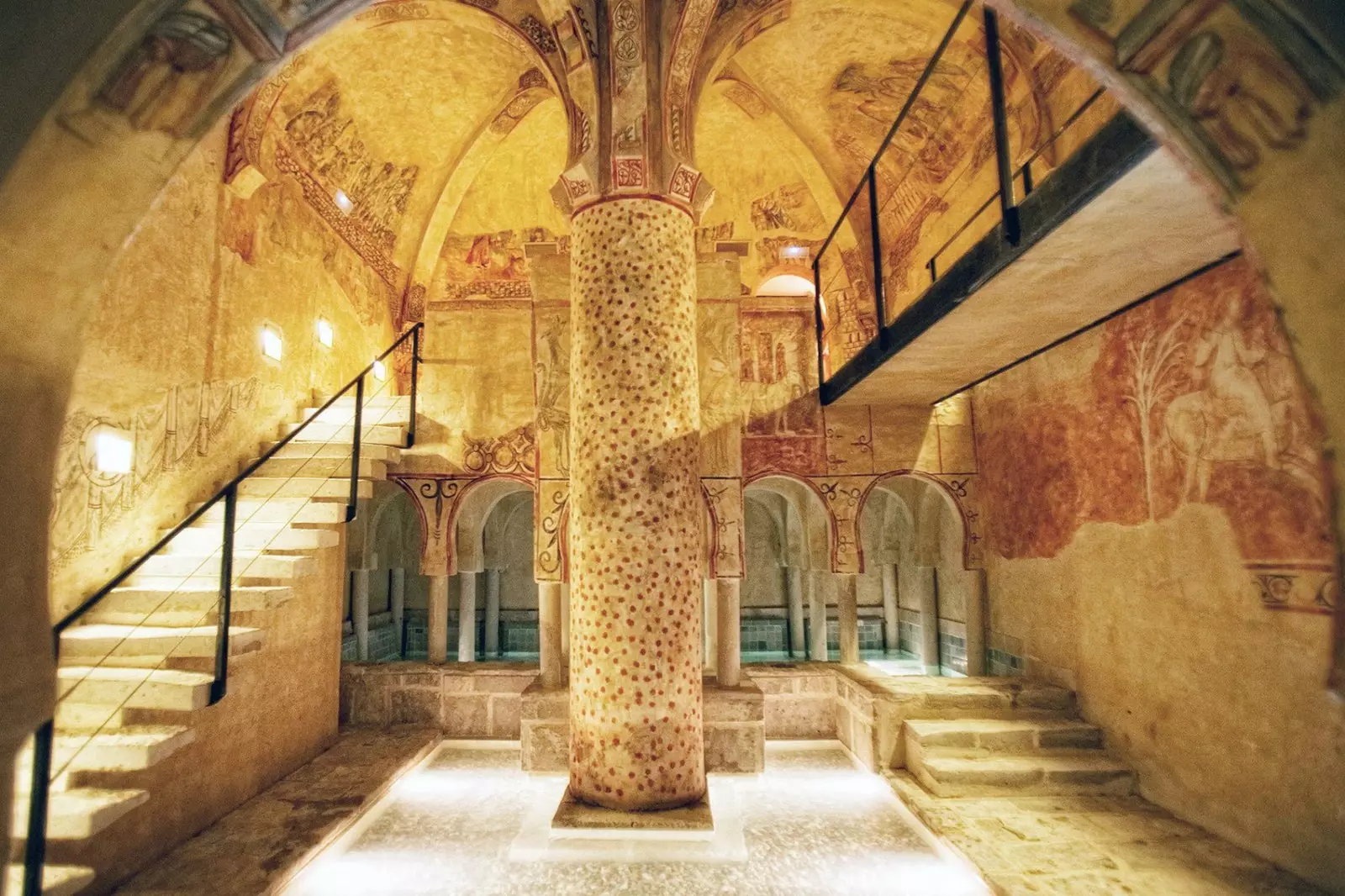
Olmedo Spa.
HALF A HUNDRED HERITAGE
Nothing less than 46 monuments declared as Assets of Cultural Interest They are part of the Rueda Wine Route, offering a getaway framed by superb castles, imposing civil constructions and a large collection of temples and hermitages. Undoubtedly one of the obligatory stops on the route is the Historic-Artistic Complex of Tordesillas, the most visited town in the province of Valladolid and remembered in history as the scene of captivity of, the misnamed, Juana la Loca.
Her medieval bridge invites you to enter some streets where history comes to life and where it is mandatory to discover the Mudejar art of the Royal Monastery of Santa Clara, declared National Heritage, as well as the Treaty Houses, where the New World was divided into two after the signing of the Treaty of Tordesillas. It remains to say that her Parador is one of the best places to spend the night in the area.
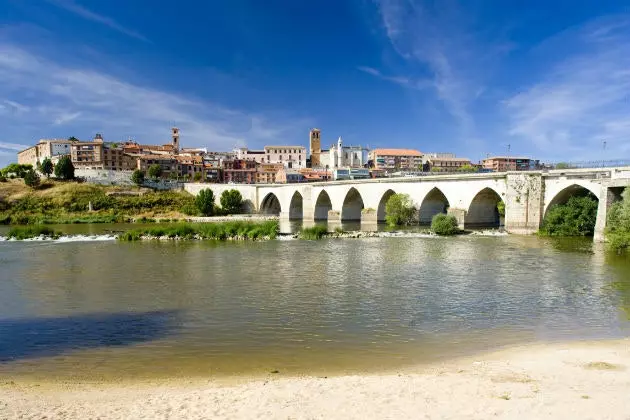
Tordesillas Bridge.
Of course, other equally Elizabethan names that are part of the route are the castle of the Mote in Medina del Campo or the town, the walled enclosure and the church of Santa Maria del Castillo Madrigal of the High Towers (Ávila), birthplace of Queen Isabella the Catholic. Interesting results also in Wet the only museum in Spain dedicated to Carlos V, an immersive experience in the life of the battle-hardened emperor and the court in the 16th century.
Now, There is nothing more traditional in Tordesillas than the El Toro Polvorones. And if not, ask any native about this jewel that has been made in the Galicia pastry shop for more than 150 years. Definitely an icon of the village where to stop whenever you pass through the area.
HIKING AND NATURE
Who said the plateau was dry? The Riberas de Castronuño Natural Park crosses a large part of this route, offering shelter to a wide variety of species and various outdoor activities, from hiking to equestrian and mycological routes in which to plan a day of nature after this long day of carnal pleasures. In addition, the Rueda Wine Route itself hosts its own equestrian, hiking and cycling route for the most daring with 40 kilometers of vineyards, castles and farmland linking Medina del Campo, Rueda and La Seca.
SUBSCRIBE HERE to our newsletter and receive all the news from Condé Nast Traveler #YoSoyTraveler
